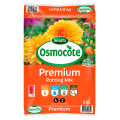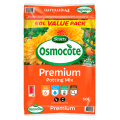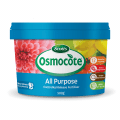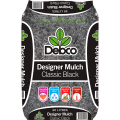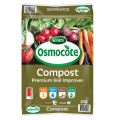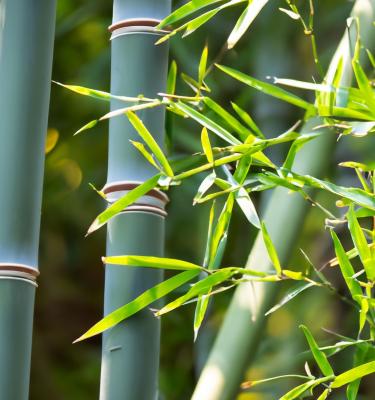

How to grow bamboo in Australia
Looking for shade, privacy or simply a lush addition to your tranquil garden? Bamboo is a hardy, fast-growing option for those who want to see their backyard take shape in weeks, not months. This quick guide covers where and when to plant bamboo, and how to keep it healthy and, most importantly, under control.
What is bamboo?
Bamboo is the fastest-growing land plant in the world! With tall stems, distinct green leaves and lush foliage, bamboo is a great addition to just about any space, whether you’re in need of extra privacy or you want to create a tropical sanctuary within your inner city garden.
With a range of shapes, colours and sizes to choose from, it’s helpful to understand the variety of bamboo types and which will best suit your space. Some species can be grown in pots and containers, making them great options for smaller spaces like terraces or balconies. Other species need to be planted in the ground with lots of room to thrive (some species can reach up to thirty metres in height). Whatever type you choose, bamboo is an easy plant to grow that offers lots of versatile uses in the garden, including hedging, screening and ground cover.
.jpg)
6 tips for growing bamboo
1. Pick the right location: Choose a spot in your garden that has full sun or partial shade with moist, well-drained soil. We recommend avoiding spots that are waterlogged or bone-dry.
2. Keep your bamboo hydrated: Make sure your bamboo is watered well during dry spells, especially in the first two years of its life. This will help your bamboo plant to establish strong roots so it can grow into a healthy, hardy plant.
3. Choose the variety that suits your space: Bamboo comes in a range of shapes, sizes and colours. If you’re planting a spreading variety, we recommend planting your bamboo in a pot. This makes it easier to contain your plant and ensure it’s a welcome addition (rather than an unintended nuisance) to your garden.
4. Nourish your plant in spring: Give your bamboo a slow-release fertiliser in spring so it has the nutrients it needs to continue growing, maturing and developing.
5. Don’t forget to prune your plant: Thin and trim old or damaged canes every spring to encourage new growth.
6. Add some mulch: Cover the base of your plant in a layer of quality mulch every spring. This will help to keep your bamboo cool and moist, especially as the weather heats up in summer.
When to plant bamboo in Australia
The best time to plant bamboo will vary, depending on where you live in Australia and what your local climate is like. In general, spring is usually a good time to plant bamboo, but if you live in a tropical or subtropical area (Queensland, we’re thinking of you), winter might be a safer option. It’s also possible to plant in summer, but you’ll need to water your bamboo regularly so it has the hydration it needs to establish strong, healthy roots.
Planning on transplanting your bamboo from pots to the ground? We recommend making this change in spring or autumn – winter and summer are more disruptive due to harsh weather like frost or severe heat.
Popular types of bamboo plants
Before you rush out to the nursery, it’s helpful to do your homework so you understand what types of bamboo plants are available and which varieties might best suit your unique space. Here are some of the most popular choices:
-
Coronalis Bamboo: This rare and striking variety loves the cold and can grow up to 3m tall. It’s a great option to plant in exposed areas and can also be used to create a hedge or privacy screen.
-
Umbrella Bamboo: This popular choice is a people-pleaser because it’s prone to clumping, which means it’s not likely to run wild and take over your garden. It can grow up to 4 metres in height and has lush, leafy foliage. It’s also a great option to grow in pots.
-
Black Bamboo: Black bamboo has jet-black canes (like the name suggests) that start to show around year three. It’s sure to add some drama to your space and can also be grown in pots.
-
Arrow Bamboo: Arrow bamboo doesn’t mind getting wet, so if you’ve got a soggy spot that you don’t know what to do with, this variety could be your new best friend. Growing up to 5m in height, Arrow bamboo’s glossy, lush leaves make it one of the best options to create a privacy screen (that’s pretty and practical).
-
Golden Bamboo: Strong and tall, Golden bamboo grows to about 8m in height. Its golden canes need plenty of sun, so choose a spot where it’s exposed to a healthy dose of Vitamin D.
-
Blue Fountain Bamboo: This purple wonder doesn’t mind a bit of shade. It’s also a great option for smaller gardens that are tight on space.
-
Dwarf White Striped Bamboo: It might be small, but what it lacks in size, it makes up for in looks. Growing to about 50cm tall, its white-striped leaves make this an eye-catching plant for pots and small spaces.
Note: Some varieties are considered weeds in certain areas, so we recommend checking your local state’s rules before you start planting bamboo in your garden.
Where to plant bamboo in Australia
Bamboo is easy and simple to grow – whether you’re an advanced gardener or just getting started. It prefers moist (but not soggy) soil. Some bamboo types love full sun, while others can tolerate partial shade. Chat with your local nursery about the needs of your specific bamboo plant so you can ensure it’s a suitable choice for you and the space you intend to plant it in.
What spots does bamboo thrive in?
Bamboo can thrive in a variety of areas, including:
-
Full sun: Full sun brings out bamboo’s brilliant cane colour.
-
Partial shade: Bamboo can tolerate some shade, depending on the species. Some varieties are great for planting under trees and can complement your existing garden.
-
Containers and pots: If you’re working with a small space, such as a terrace, compact bamboo clumping plants are great options that can be planted in pots or containers. They can be easily moved around and, if the time comes, planted in the ground, making them a flexible option.
Common questions about growing bamboo
How can bamboo be used in my garden?
From added privacy to some much-needed shade, bamboo can serve a variety of purposes. Here are two common ways bamboo is used in gardens:
-
Privacy screens: Thanks to its tall, leafy and dense features, bamboo is a great option if you want to create a privacy screen, protect your garden from the wind or create a tropical oasis in an urban environment.
-
Ground cover: Low-growing bamboo grass plants can offer great coverage for patchy areas in your garden. Its lush foliage and delicate appearance can cover exposed soil and help to elevate the look and feel of your garden.
Can I propagate my bamboo plant?
Yes! Once your bamboo plant has stopped flowering, use clean secateurs (or a pruning saw) to cut a healthy green stem, just below a node. Trim the top and pop the cutting in fresh water until you start to see new roots appear.
Once the roots have grown to a reasonable size, you can plant the stem in fresh, well-drained soil. To grow more bamboo plants, simply rinse and repeat this process – it’s simple, easy and best of all, free!
Is bamboo difficult to maintain?
Once it gets going, bamboo is a sturdy, fast-growing plant. If you have limited space, regular pruning and maintenance will be required to keep it in check. You can reduce the upkeep required by limiting is room for expansion. For example, you might consider planting it inside a container or within the confines of a solid retaining wall.
